August 1st, 2023
The Term «Design» as a Linguistic Case
Today, only the lazybones don’t argue about the meaning of the word «design». This article is a kind of provocation, aimed at calling for «drawing fire upon myself», since almost each statement in it can be expanded or challenged, even raise discussion about the whole article.
In attempts, made to define the word «design» fighting is taking place both in technical and popular publications, as well as on the Internet, on such sites as Linkedin, Design Research Society, etc. In the creative discussion about the meaning of the word «design» are involved not only the so-called post-Soviet countries but also the ones, where the English language is a native one, or in general use. In the former Soviet countries, as well as in the states, which are very strongly expressing the ideas of preserving their national language, the term «design» has been acknowledged, probably, up to now as an unnecessary «western» influence.
Traditionally, until the emergence of the word «design», such terms as «artistic projecting» (Androsova, 2005), «industrial art» (Gorkin, 2007), «projecting of material space» (Konjuhov, 1994), etc. were in use. With the help of such clumsy phrases the general intervention of the English language into the socially or nationally concerned countries was cut off. But the borders opened, and our term eventually came into use almost without limitations…
Just as in the West! Yet, why are we not happy about this little victory of the English language? But, when taking over the term «design», we joined the English-speaking world, which itself is confronted with the up to now finally unsolved theorem – What is Design?…
Why should we know what «Design» is?
To the people at large, the definitions on the subject of design are not necessary, they use it subconsciously and catch it, when coming across such expressions as «Nail Design», «Image Design», etc. In the vulgar understanding the word «design» is applied as synonym to the word «glamour».
However, who should know, what is design? First of all, it is necessary for us, teachers of the schools and institutions, which prepare designers with different orientation and qualification.
We are in need of formulation of what design is in order to:
_ determine the aims of what we are teaching
_ enumerate necessary skills for the students to fulfil their aim of study
_ select the main theoretical subjects for mastering these skills
_ determine the subject matter of the programmes of practical training
_ specify the role of each subject and practice in study programmes
_ at the early stages reveal the aptness of the school-leavers, make corrections in the approaches when teaching the present school-leavers…
Apart from the representatives of the educational institutions, businesspeople should also know what «design» is. The owners of the private enterprises or state companies, participating in the manufacturing of products should know all about design in order to
_ clearly determine the boundaries of their interests and ambitions
_ raise the competitiveness of their products
_ to pursue purposefully and professionally marketing policy
_ struggle successfully for getting this or that product BRANDED, that is best of the best ones.
Another interested party in the correct understanding of the meaning of the word «design» is the state (Hristoforov, 2005). Economical well-being of the country is directly dependent on the demand of local goods both at home and abroad. Output of high quality goods, the presence of brands creates a strong image of the country in the world. As today most of the production is «design-consuming», the state should co-operate in the development and rise of the design. And to close the list of those, who are in need of defining the term «design», are certainly designers themselves. It is vital for them because:
_ young people when selecting their profession should know their predestination and place in the society
_ they have to realise whom they belong to: are they artists, craftsmen or projectors
_ advance research work in design and make use of the fruits of the investigations…
A Bit of Etymology
What is «design» as such? The word «design» has Latin origin and the stem of the word – sign – is observable in many nouns: signal, designation, signification – etc. But as a verb, it is a universal one among the English speaking peoples. It stands for to draw, and to plan and to schedule. The words with the stem sign often carry in them confirming, resolute character. Here it is proper to dwell on the following – why to explain once again this, which is made clear in the dictionaries of the English language? But, it is impossible for us to determine and specify «designer» without providing valid definition to the word «design».
A Bit of History
Although the well-known saying of the type «which came first – the chicken or the egg», leaves the question of being the first unsolved, I am of the opinion to suggest that design emerged earlier than designers.
Utilitarian objects of different periods of time and culture can today be distinguished mainly by their «design», however, the so popular «company style», one of the essential elements of which is the support to the identity of the members of a certain group (Fig. 1) or union, characterises also the leaders and tribes of many peoples (Fig. 2).
When we discuss today the quality of the contemporary clothing or, for instance, the police uniform, we inevitably use the word «design» – in the meaning of the image, appearance, or even external skin! We mention also the name of the designer, author of the given clothing. However, the clothing of the people of the tribes had or has its design, but the names of the «designers» are unknown to us. There are numerous other examples testifying that «design» in the meaning of image – aspect – skin etc. has always been but there were as if no «designers» existing (Forty, 1992).
First Designers
Commodity and technical products (fur coat, barrel, carriage…) have often outlived their owners and served them for years. «Skin» of the items acquired new features very slowly when the existing products met the needs of urban, so much the more the peasant user.
When the transporters, plastics and globalization enabled to provide people with enormous amount of competitive goods, the foundation was laid to the so-called «trend» or «modern style», which was the basis of creating any product. The consumer was taught to feel himself pleased only when he was surrounded with objects, which were in tune with the spirit of the given time. The meaning of aesthetical side of life began to grow. Glamour started to be the principal thing, to set the trade in motion, while the indicators of the success were the produced goods, distinguished by the named brands, that is the goods which were declared to be the best and therefore most saleable.
 Fig. 1. Contemporary uniform of the traffic police in the Ukraine
Fig. 1. Contemporary uniform of the traffic police in the Ukraine
 Fig. 2. North-American Indians of the Oto tribe in their «company» garments in 1881
Fig. 2. North-American Indians of the Oto tribe in their «company» garments in 1881
The policy of business management led to the emergence of likeable people with paints, pencils, paper who constantly occupied places in manufacturing companies, fashion shops, publishing houses. Whatever titles were given to these people – artist of the company, modeller, decorator, artist-constructor, industrial artist, etc. and very rarely they were called designers.
An artist was an invisible figure and actually without a name, since most often the industrial engineer himself created a product and according to his talent gave the final modelling to his «child». In so much as the objects became technically more complicated, the task of the engineers was focusing more on power, efficiency and other «profitable» characteristics, and projecting of the external look of the objects was carried out in parallel with the main process of working them out in specialized offices or companies.
As a result, the final design began to be developed by several specialists, cooperating for putting out a product with given utilitarian properties and pleasing appearance. Part of these workers isolated themselves from the engineers, and were titled as artists-designers or simply – DESIGNERS.
Who was the first titled as a designer? A lot of sources attribute the honour to be «the first designer» to the English artist-potter Josiah Wedgwood, born in 1730, who enjoyed his fame all over Europe (Fig. 3).

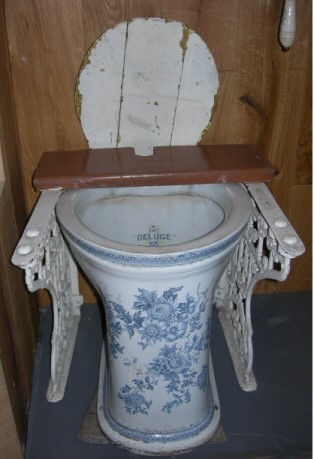 Fig. 3. Statue of Josiah Wedgwood (a) and “close stool water closet pan” designed by Josiah Wedgwood in 1777 (b)
Fig. 3. Statue of Josiah Wedgwood (a) and “close stool water closet pan” designed by Josiah Wedgwood in 1777 (b)
In the 20s of the last century the definition «industrial design» emerged, which was attributed to Walter Gropius, a German architect, the founder of the revolutionary design school «Bauhaus» (Fig. 4). He came out with the idea of training such artists who would be able to create new works of art combining art, design and architecture.
Design and «Others»
Memories about how the artists step-by-step acquired key position in final shaping of the objects gave rise to several fictional problems – «relations between design and art, what is its attitude to science and technology and architecture», «crafts and design», etc.
And just a phrase was heard: «an artist created an original design». But yet, where is an artist there is an art! So design – is it art? Let’s have a look.
Art from the classical point of view, is a means having an effect on us, on our psychology. Art is but called for to reflect reality in artistic forms. Science and technology have, in turn greater effect on material objects. Science is striving for objectivity and rationality. But if design is dealing with the surrounding objects and it results in material things, then it turns out that design tends towards science and technology, but not to art?
 Fig. 4. Walter Gropius (1883–1969)
Fig. 4. Walter Gropius (1883–1969)
However, on the other hand, a product, even particularly utilitarian one, is in the hands of a designer transformed, it acquires additional aesthetical features and qualities. In design the general art principles, these of artistic composition, colour study, etc. are followed. Very often design «exploits» the outstanding works of art (Fig. 5), applying them in the decoration of rooms, on facades of the buildings, in utilitarian items, in landscape planning or urban environment (Fig. 6).
From these arguments we can conclude that «design» and «art» are linked with general art principles, but separated by spheres of activity and objects of embodiment.

Fig. 5. The most famous sculpture in Louvre – Aphrodite, named also Milo Venus
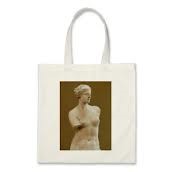
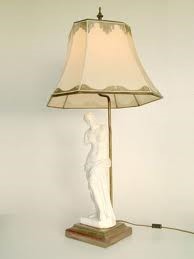
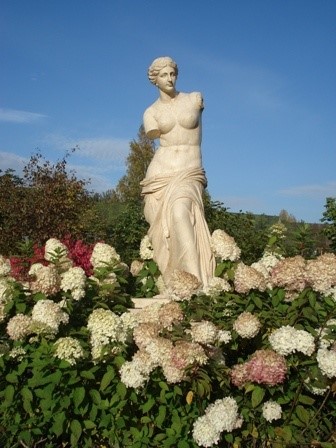
Fig.6. Examples of direct application of outstanding works of art in the products of industrial and landscape design: Venus Bags (a) , Venus Table Lamp (b) , Statue of Venus for the park (c)
Design in Architecture
If design is actually a linking unit between art world and that of material one – the world of science and technology, then how is it associated with architecture?
In my opinion, we can draw parallels with the discussion about the relations between design and technology, since the objects of embodiment are in both cases material things. Artistic training of designers is actually the same. And in some well-known cases they can solve similar tasks. For instance, both designers and architects meet often in the process of re-fashioning the landscape. There are even two similar terms in use: landscape design and landscape architecture. Likewise, we have interior designer and interior architect.
But architecture – is it art or science? Yet, when architecture is pretending to be acknowledged as art, then architecture of buildings is occasionally striving for such a freedom that its creations become unique and are beyond doubt taken as artworks. However, when describing such «creations», it is very convenient to use such expressions as «architectural design», «design of facades». Architects even search in design for symbolism and sacred meaning (Fig.7). The massive standardized building-up has, on the contrary, very rarely its own distinguishing facade design (Fig.8), which can be put down to the too utilitarian approach and budget deficit.
It turns out that architecture is a kind of activity, in which science, art and design are displaying themselves in different degrees. So that the shift on the scale of technology and science – design and architecture – architecture and art is a matter, which is relative and complicated to measure. Even more difficult is to find a suitable universal formulation specifically to design, which corresponds to all its contemporary aspects. Even the superficial search results in tens of names: Industrial Design, Transportation Design, Information Design, Web Design, Interior Design, Clothing Design, Light Design, Graphical Design, Book Design, Polygraphic Design, Landscape Design, Navigation Design, Eco Design, Architectural Design, Feng Shui Design, Retro Design (Fig. 9a) and Futuristic Design (Fig. 9b), Sound Design, Author-Labelled Design, etc.
 Fig. 7. Church of La Sagrada Familia (Temple Expiatori de la Sagrada Família)
Fig. 7. Church of La Sagrada Familia (Temple Expiatori de la Sagrada Família)
 Fig. 8. Standard building-up in Russia in the 20th century
Fig. 8. Standard building-up in Russia in the 20th century
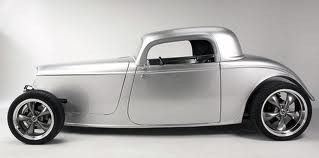
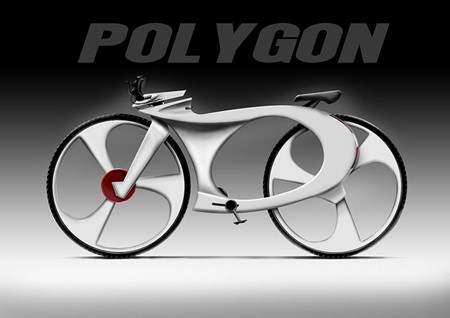 Fig. 9. A Car in the style of Retrodesign or «Hot Rod» (a) and conceptual bicycle or «Bicycle of the Future» (b)
Fig. 9. A Car in the style of Retrodesign or «Hot Rod» (a) and conceptual bicycle or «Bicycle of the Future» (b)
Conclusion
It would be of interest to check, according to this list the suitability of the given definitions to the term DESIGN, which occur in large amounts and, in result select the most universal definition.
The most typical of the alternative explanations of the design:
_ Design – creative method and the process of functional shaping, but also an area of professional activity in projecting industrial goods, furniture, tools, machines, arrangement of the object environment and working processes (Dictionary of Economics, 2007).
_ Design – artistic projecting of industrial products, object environment (Dictionary of Visual Art, 2004-2009).
_ Design – various forms of projecting activities, aimed at formation of aesthetical and functional qualities of the object environment (Radchenko, 2004).
_ Design – creative activity, the purpose of which is determination of formal qualities of industrial products. These qualities comprise external features of the item as well, but primarily those structural and functional mutual relations, which turn the product into the unified whole, both from the consumer’s standpoint and that of the manufacturer. Design strives to encompass all aspects of the environment of man, which is conditioned by industrial manufacturing (Maldonado, 1959).
Definitions of the term «design», as we notice, comprise formulation of the shape and the means of expressing this activity, as well as the aims and objects of embodiment. As a means of expressing designing activity, the authors of the given definitions bring out artistic projecting, creative method and the process of functional form shaping, various ways of projecting activities. It is possible to bring out the following key words: «artistic», «creative», «functional», «shaping», «projecting». These words and their combinations you can definitely find in either these or those explanations added to the definition of the design.
As for objects of design, the most frequently mentioned key words in the same definitions are: «industrial products», «object environment surrounding a man», but also «aesthetical and functional qualities» of the named objects.
Such spheres of design as design of working or technological processes, design of databases, or design of programme providing seem to be the phenomenon of the same linguistical universality as the term studied by us, which often leads to misunderstandings and curiosities.
On the grounds of the analysis carried out, it is possible to make generalising definition to such a phenomenon as design:
Design is an area of professional creative activity, which is aimed at creation, projecting, perfection or final shaping of the objects of material environment meeting the given utilitarian and aesthetical qualities.
Having gone over the objects and means of expressing such creative process as design, we can make an attempt to formulate the most general requirements, which are also suitable to the definition for those who we consider as «designers»:
Designer – the specialist who has received the basics of art education, has mastered skills of projecting in the selected area of activity, is responsible both for the external appearance of the object and for its utilitarian qualities, is able independently to carry out projecting work, or implement his task in the working team. In the definition the word «creative» is deliberately omitted. In my opinion the specialist can only prove by his activity to be a creative and imaginative person. After the formulations of the concepts of design and designer are drawn up, the readers are offered to test their universality themselves, applying one of the abovementioned areas of design.
DESIGNABILITIES is a non-profit making initiative aiming to support the knowledge exchange within and beyond the design field. For images used - especially those compiled and provided by our guest authors - we ask the guest authors to take care of the clarification of the copyrights. Additionally we make every effort to locate the copyright holders as best we can and obtain all permissions. If you would like to bring any inadvertent copyright issues to our attention, please contact us!
References
Androsova, E.M . 2005. The Principles of Artistic Costume Design. Chelyabinsk State University. (Э.М. Андросова / Основы художественного проектирования костюма)
Dictionary of Economics, 2007. (Экономический словарь) http://slovari.yandex.ru/
Dictionary of Visual Art, 2004-2009. (Словарь изобразительного искусства, 2004-2009) http://slovari.yandex.ru/
Forty, A. 1992. Objects of Desire: Design and Society Since 1750. Thames & Hudson.
Gorkin, A.P. (Ed.) 2007. Modern Illustrated Encyclopedia. Iskusstvo Moscow: Rosman – Press. (А.П. Горкин / Современная иллюстрированная энциклопедия)
Hristoforov, J. 2005. Design as an Index of Economic Development. Baltic Horizons, 3.
Konjuhov, N.I. 1994. Applied Aspects of Modern Psychology. Terms, Laws, Concepts, Methods. Moscow: RAGS. (Н.И. Конюхов / Прикладные аспекты современной психологии. Термины, законы, концепции, методы)
Maldonado. T. 1959. I International Council of Societies of Industrial Design. Stockholm Sweden. www.icsid.org
Radchenko, I.A. 2004. Training Glossary of Advertising and Public Relations. (И.А. Радченко / Учебный словарь терминов рекламы и паблик рилейшнз) www.vocable.ru
Images:
Fig 1. www.mikro-mir.com
Fig 2. http://kunst-camera.livejournal.com/6142.html
Fig 3a http://www.buyukgokcesu.com/2010/09/10/pazarlamayi-icat-eden-adam/
Fig 3b http://www.abertilleryanddistrictmuseum.org.uk/News_11_07.html
Fig 4. www.famous.totalarch.com
Fig 5. http://www.russianwomanjournal.com/
Fig 6a http://www.zazzle.com/milo+bags
Fig 6b http://www.antiques.com/classified/14370/Danish-Bisque-of-Venus-de-Milo-Custom-Lamp
Fig 6c http://www.elitpodarok.ru
Fig 7 www.vdorogu.net
Fig 8 http://www.rusrep.ru/
Download & Citation Info
Hristoforov, Jevgeni (2023): The Term «Design» as a Linguistic Case. DESIGNABILITIES Design Research Journal, (08) 2023. https://tinyurl.com/4deyymdn ISSN 2511-627